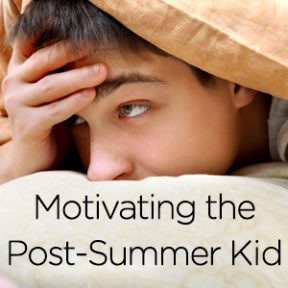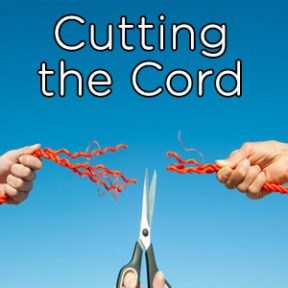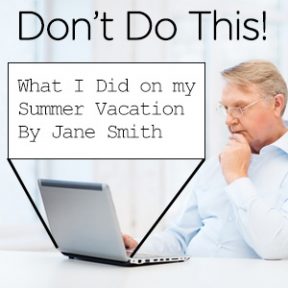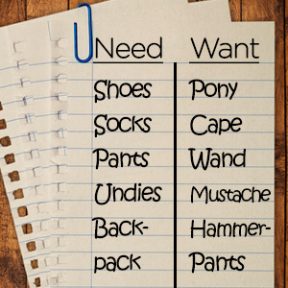 Heads up, parents! There’s more than just personal statements to write! Watch out for the sneaky writing supplements!
Heads up, parents! There’s more than just personal statements to write! Watch out for the sneaky writing supplements!
Now that just about all college applications are up and ready for students, here’s a quick tip to avoid 11th-hour crises when your kid finds out that there were supplemental essays that they didn’t know about — a few hours before the application deadline. Yes indeed. As if college applications aren’t confusing enough!
You probably know that the Common Application is used by 519 colleges. It’s the largest organized system for college applications so there’s a strong possibility that your child will be using it. On the Common Application, they’ll need to write a personal essay using one of five prompts. This essay will be seen by all of the colleges.
Some colleges have a Supplemental Application, which is another short form that asks more specific questions that relate to their individual colleges. This is where you’ll learn about additional essays, portfolios and interviews that this college recommends or requires. Ask your child to fill out these supplemental applications right away so they can see all of the additional essays that are required. Depending on how they answer these questions, they may receive new pop-up windows requiring more essays or information. That’s why it’s important to open the applications early and become familiar with their contents right away.
I’ve had many panicked students calling me at 10:00 pm — just 2 hours before the deadline — wondering how they’re going to write these essays! Yikes! To minimize stress during the next few months, open all applications now and plan out how each one will be completed in your planner!
 Heads up, parents! There’s more than just personal statements to write! Watch out for the sneaky writing supplements!
Heads up, parents! There’s more than just personal statements to write! Watch out for the sneaky writing supplements!
Now that just about all college applications are up and ready for students, here’s a quick tip to avoid 11th-hour crises when your kid finds out that there were supplemental essays that they didn’t know about — a few hours before the application deadline. Yes indeed. As if college applications aren’t confusing enough!
You probably know that the Common Application is used by 519 colleges. It’s the largest organized system for college applications so there’s a strong possibility that your child will be using it. On the Common Application, they’ll need to write a personal essay using one of five prompts. This essay will be seen by all of the colleges.
Some colleges have a Supplemental Application, which is another short form that asks more specific questions that relate to their individual colleges. This is where you’ll learn about additional essays, portfolios and interviews that this college recommends or requires. Ask your child to fill out these supplemental applications right away so they can see all of the additional essays that are required. Depending on how they answer these questions, they may receive new pop-up windows requiring more essays or information. That’s why it’s important to open the applications early and become familiar with their contents right away.
I’ve had many panicked students calling me at 10:00 pm — just 2 hours before the deadline — wondering how they’re going to write these essays! Yikes! To minimize stress during the next few months, open all applications now and plan out how each one will be completed in your planner!
 Want your kids to start this new school year with good study habits? After a summer of rolling out of bed in the late-mornings and having no homework, it can be difficult to get your kids’ mindset to change, so they’ll start planning how they’re going to get homework, test prep, and chores done.
Want your kids to start this new school year with good study habits? After a summer of rolling out of bed in the late-mornings and having no homework, it can be difficult to get your kids’ mindset to change, so they’ll start planning how they’re going to get homework, test prep, and chores done.
Here are 4 tips to reset their patterns so they’ll be on track for this school year.
#1: Start homework as soon as they get home
Sure, give your kids a snack when they arrive home to let them decompress from school and share with you the highlights from their day. But after that last sip and bite, that’s when they need to check out their planners to determine what needs to be done and in what order. They need to see what assignments are due first, and tackle them right away.
Don’t let them argue that they want to play a few video games or check their social media outlets before they do their homework. You know that these distractions will suck them in and zap the energy they need to take care of their academic responsibilities. Don’t give in!
#2: Do homework on the day it is assigned — not the night before it’s due
While doing homework on the same day it is assigned may sound logical to you and me, it’s surprising how many students insist on doing their homework the night before (sometimes the morning that) it’s due. This is a bad habit because inevitably something always comes up — it’s pizza night out with the family or a surprise visitor invades the house or they get sick — and then the homework doesn’t get done. Besides, if they do the homework on the day it’s due, the concepts will still be fresh in their memories and there’s a better chance that they’ll get higher scores and retain the information for tests down the road. This also gives your child the opportunity to meet with their teachers or friends to get more clarity about things they didn’t understand BEFORE they need to turn in the work or take the test.
#3: Don’t do the weekend’s homework on Sunday night
Another really bad habit is doing the weekend’s homework and test prep on Sunday night. It’s almost an epidemic among high school students to save all of their work for Sunday night. They say that they need a break and would prefer not to do any work until the end of the weekend. But, set up good habits now. Insist that all homework, test prep and projects get done after school on Friday. You heard right! Be prepared for a lot of whining about this but stand your ground. Who’s the boss? (Pro-Tip: It’s not Tony Anza!)
If they wait until Sunday night, think of all of the reasons that the work won’t get done:
- They won’t have the book or worksheet (and it’s too late to get it from a friend)
- They won’t have time to finish it because they underestimated how long it will take to complete the assignments; and
- They won’t have time to study the material to really understand it before the test. Besides, wouldn’t they rather have a stress-free weekend knowing that they have already completed all of their work and can really decompress and have fun?
#4: Homework and test prep first; then video games, social media, or TV
Insist that all homework and test prep gets done before they engage in their social outlets. If that means taking away cell phones and video games, then so be it. This is a vital piece to instill in your kids before they become independent teens with terrible study skills. After they become teenagers, it’s going to be really difficult to get them to embrace these helpful habits, so get them started now while you have control over their activities!
 This is just a quick & friendly reminder for seniors (the high school variety, not the geriatric type) to sign up for the upcoming SATs/ACTs.
This is just a quick & friendly reminder for seniors (the high school variety, not the geriatric type) to sign up for the upcoming SATs/ACTs.
The October 3rd SAT deadline is September 3rd, the November 7th deadline is October 9th, and the December 5th deadline is November 5th. Sign up for the SAT here.
The September 12th ACT deadline is August 7th, the October 24th deadline is September 18th, and the December 12th deadline is November 6th. It’s best to sign up for all of the tests now so you won’t miss deadlines and have to pay late fees. Sign up for the ACT here.
If you aren’t familiar with the testing process, I strongly recommend that you work with a private SAT or ACT tutor. Like anything else that is important to you, you want to be prepared. Understanding the format and rhythm of the test will help you improve your scores. You might also like to expand your vocabulary and review math skills (Algebra I and II, and Geometry). The best way to increase your essay writing score is to learn how to include the writing mechanics and style that the readers prefer. And most importantly, it’s time to take lots of practice tests so you’re prepared.
Here’s a handy table with test dates and deadlines:
| Test | Test Date | Deadline |
|---|---|---|
| ACT | 10/24/2015 | 9/18/2015 |
| ACT | 12/12/2015 | 11/16/2015 |
| ACT | 2/6/2016 | 1/8/2016 |
| ACT | 4/9/2016 | 4/4/2016 |
| ACT | 6/11/2016 | 05/06/2016 |
| SAT | 10/03/2015 | 09/03/2015 |
| SAT | 11/7/2015 | 10/9/2015 |
| SAT | 12/5/2015 | 11/5/2015 |
| SAT | 01/23/2016 | 12/28/2015 |
| SAT | 03/05/2016 | 02/05/2016 |
| SAT | 05/07/2016 | 04/08/2016 |
| SAT | 06/04/2016 | 05/05/2016 |
 Even though raising teens can possibly be more challenging than say, running a country or fighting terrorists, when you actually drive your child and drop them off at college, it can be heart wrenching. When I dropped off my youngest daughter, Jaclyn, at Claremont McKenna College, she was in tears as I drove away and I felt like I’d left my infant on the side of the road. Sigh. Although she transitioned beautifully, here are some tips for making your transition less painful for you, and your college-bound kid.
Even though raising teens can possibly be more challenging than say, running a country or fighting terrorists, when you actually drive your child and drop them off at college, it can be heart wrenching. When I dropped off my youngest daughter, Jaclyn, at Claremont McKenna College, she was in tears as I drove away and I felt like I’d left my infant on the side of the road. Sigh. Although she transitioned beautifully, here are some tips for making your transition less painful for you, and your college-bound kid.
Before they Leave:
- Put together a photo album or scrap book that includes pictures and mementos from birth to today. By combing through your albums or boxes of photos, you’ll find all kinds of treasures. This is a great exercise for your child too. It helps put into perspective, this big step for them. They’ll appreciate their lives to date and better understand who they are. This makes for a great foundation to start their next phase in life: college!
- Invite family and friends over for a farewell party during the last week at home. Share the photos and video clips with the guests so they, too, can enjoy the walk down memory lane. It also provides a great opportunity for your kid to invite friends that they might not be able to see before they leave. Take lots of photos so they can have them to share with the new friends they’ll meet in college.
- Help them pack for college. The college will email a list of things to bring, as well as a list of things they provide. Most dorms have extra long mattresses so your regular twin sheets won’t fit. If you can’t find extra-long sheets in your hometown, order them online or near the college campus.
- Create a bucket list of things you would like to do with your kid before they leave. That way, you can eat at their favorite restaurant, prepare a homemade tradition, have a bonfire on the beach, watch new movies, do a movie marathon, or bake their favorite cookies. By honoring the things they love to do with you, you’re also creating new memories.
At the College:
- Help them set up their dorm rooms. They’ll probably need a container for their toiletries so measure their cubbies so you can get one that fits in the space provided. If your kid is anything like Jaclyn, buy a shoe carousel or something that fits in the limited space they have. They may need an extra dresser for their clothes, especially if they are moving to an area that has all 4 seasons. This will help satisfy that “mama bear” instinct and your kid will appreciate you paying for it all!
- Tour the campus so you feel comfortable knowing where they’ll be hanging out when not in classes or their dorms. Check out the bookstore and buy that t-shirt. You know the one — Stanford Dad or Claremont McKenna Dad. My husband still has at least a dozen shirts from each of our daughter’s colleges.
- Take them out for dinner in town. They’ll be eating on campus and getting tired of the same ol’ thing soon enough. Treat them to sushi or something they probably can’t afford on their budgets.
- Say goodbye. Most colleges have activities for parents to help with the separation anxiety that so many of us feel. That way, the kids start bonding with fellow students in their dorms. After your activities, you need to leave. Yup. Hugs and kisses, and then be on your way.
Back at Home:
 I just hosted a softball reunion!
I just hosted a softball reunion!
Back in the 80’s when the kids were toddlers, my husband and I sponsored the Strata Marketing Brokers baseball team. Don’t judge, it’s at least as good of a name as the Washington Senators!
We played softball every week and hosted BBQ parties after each game. Our kids played together and we had fun with all of the families, but, as the guys started injuring themselves with dislocated shoulders and pulled hamstrings, we started doing other things and eventually dropped softball all together. And since we were no longer playing the game, we no longer had contact with a lot of those families.
Twenty years later, I decided to get all of old players and their families together for a reunion, because hey, it’s been Reunion City around here lately. We had completely lost touch with everyone. After digging through Facebook and googling on Google, I managed to find about half of the players, and got in touch.
To my surprise, we had couples flying in from Colorado and Nebraska JUST to attend the reunion! Wow! Getting together with the old team was both invigorating and nostalgic. Although none of us had seen one another in over 20 years, it felt like we had just played a game at Jade Street Park in Capitola and strolled back to our house for the party.
To ensure that we all got to connect with everyone (and because I’m a teacher at heart), we sat in a circle in our living room — like sharing time in preschool! — and gave a 2-minute update on our lives. Not only did we enjoy hearing all the news but we got to learn about things that we didn’t know before. Two players actually went to the same college at the same time and didn’t know it. Imagine that. For those who have remarried, their spouses got a great introduction to the team, and we in turn, learned more about them, too.
We watched a slideshow and video clips from the good ol’ softball days. Even though the photo and video quality was terrible, everyone enjoyed seeing those memories. For those of us who live here in Santa Cruz, we’re planning to get together again.
The guys are now into golf and it looks like we’re moving in a new sports direction. And because it’s how we (as a society) keep in touch now, I’ve created a Facebook Group for the team and uploaded over 200 photos from the reunion. Reunions are great – you get to remember just what made you friends in the first place. It’s so nice to reconnect!





 It’s best to wait until your kids start school before buying school supplies. Yes, this is counterintuitive.
It’s best to wait until your kids start school before buying school supplies. Yes, this is counterintuitive.
Most teachers like to get students organized during the first week of school and often give students a list of specific things they need to bring to class. Some teachers require 1-inch binders with dividers for each class, while others want a 2-inch binder for all of their classes.
Your kids may need to purchase calculators for their math classes and you’ll want to get the exact model that the teachers require.
You should also wait to buy their backpacks. With all of the books and binders that they’ll need to cart back and forth to school each day, make sure to get a backpack that will hold everything. Otherwise, they’ll inevitably forget something at home.
If your kids have block days, then you might consider getting two backpacks so they don’t have to lug around a big backpack on block days. Get one for block days (half of their classes) and one for full days (all of their classes).
Also, I know it’s not “cool” but the backpacks with wheels are so much easier on their backs. So much for fashion!
If time allows, buy online to get the best prices. Most office supply stores are jockeying for your business with great Back to School Sales, so clip those coupons and be ready to shop! But not right away – bide your time, and you’ll save money!
 With summer coming to an end, it’s time to get your kids ready for the new school year.
With summer coming to an end, it’s time to get your kids ready for the new school year.
Instead of using the planners with big blocks of space (Monday – Friday) to cram in homework assignments (this is the kind schools provide, if they provide a planner at all), use a planner that displays all 7 days equally.
After all, they’ll need weekends to do projects and to study!
Ask your kids to enter in their planners, all classes, after-school activities, appointments, and other scheduled meetings.
With each day divided into 15-minute increments, your kids will have the opportunity to plan when they’ll do homework, study for tests, and hang out with friends. Most kids are unrealistic about how long it will take to complete homework assignments or to study for tests. Typically, they underestimate by 50%, which causes stress and lowers their GPAs. By asking them to block off time in their planners to complete each assignment, they’ll begin to see how much overall time is needed to get everything done by the end of the night.
Most students have trouble with planning how to do large projects. They wait until the eleventh hour and cram to finish it way past their bedtimes. Besides causing strife for the entire family, they really aren’t engaged in the learning process. They’re just throwing it together to get it done, and you’re probably helping them more than you should be.

By using the right kind of planner, students can plan ahead. They simply enter the project due date in the planner and then enter all of the steps needed to get it done. By blocking off time to get each task done, they’ll be able to do this without compromising their other homework, after school activities, and friends.
After your kids have entered in their planners all scheduled activities and they’ve blocked off time to get work done, all they need to do is that day’s tasks. No more stressing out about upcoming tests because study plans should already be entered so they (and you!) can rest assured knowing that they will be prepared. They can see all of the work they need to do and they’ll be more inclined to stay on task when they know that they only have a designated amount of time to complete it.
As they finish each task, they highlight it to indicate that the job is done. Kids like that sense of satisfaction as they highlight tasks. Unlike lists of homework or chores, this planner system empowers kids to block off time to do each task. That way if there is too much going on one day, they can cross off the task and move it to another day.
Have Family Meetings once a week to motivate your kids to use and follow their planners. By reviewing their progress and making sure that they’ve completed homework, studied for exams, and finished chores, you can reward them with privileges.
When they ask if they can play or go out with friends, simply ask to see their planners. If everything for that day is highlighted, then they’re free to go. If not, just tell them to ask again after everything is done. To make sure that they don’t erase tasks to hide them from you, check their planners often so you are aware of what’s going on in their lives.
You’ll find that your kids will become better students and more responsible when they use a real planner. Get them off to a new, organized start this year.
Wondering what kind of magical planner can do all of this? Well, it just so happens that I have created one! It comes in two handy sizes, and it covers a whole year of planning goodness. You can order a large size here, and a mini version here.

 Once you hit 30, you’re kind of in a class of your own. You’ve survived wild college parties, landed your first “real” jobs, and have dated a fair amount of potential Mr./Mrs. Rights.
Once you hit 30, you’re kind of in a class of your own. You’ve survived wild college parties, landed your first “real” jobs, and have dated a fair amount of potential Mr./Mrs. Rights.
And, you’re young enough to still do just about anything you want and have time to recover from your mistakes.
Understand your financial potential and plan for number one: YOU.
Most 30-somethings overspend on weddings, first baby, kids education, cars, and grad school when they should be planning for retirement and a long, healthy life ahead.
This of course requires thinking ahead about how you’ll pay for your medical expenses (living to 110 will not be cheap!) and support your lifestyle after you retire and live in that luxury retirement home!
[Source]
 I know this seems like common sense, but parents: DON’T WRITE YOUR KIDS’ ESSAYS! Every year, I sit parents down and tell them that they need to let their kids write their own personal statements and college application essays. As they sit across the table from me they nod in agreement and smile as if they have never “helped” their children on essays or homework before. And, every year, there are a handful of parents who can’t help themselves and actually write their children’s essays for them. Oy Vey!
I know this seems like common sense, but parents: DON’T WRITE YOUR KIDS’ ESSAYS! Every year, I sit parents down and tell them that they need to let their kids write their own personal statements and college application essays. As they sit across the table from me they nod in agreement and smile as if they have never “helped” their children on essays or homework before. And, every year, there are a handful of parents who can’t help themselves and actually write their children’s essays for them. Oy Vey!
Parents: College admissions officers immediately see when parents write their kids’ essays. Your perspective on life come from decades of bumps and bruises and experiences that a 17-year old simply cannot have. Teens don’t have adult foresight and vision. Sure some teens write really well but they don’t have mature wisdom that marriage, careers, and 40 years of life gives you. Writing their essays actually hurts their chances of getting into top colleges!
Besides, what kind of message are you sending to your child when you write their essays? Do you want them to think that you don’t believe they can do this on their own? What happens when they get to college with other students who actually have the writing skills needed to be successful? NOT GOOD. If you’re that concerned about their writing skills, spend the time to teach them how to improve their writing or hire a tutor to help them. That way, they’ll learn grammar and writing mechanics so they’ll be prepared to enter college with their peers.
 Now that our kids’ summer vacations are coming to a close, we need to start gearing them up to get back into the school mindset. NOT AN EASY TASK! In the past, I have found that the best way to get kids excited to go back to school is to take them shopping for new clothes. Okay, this may sound like bribery but it works!
Now that our kids’ summer vacations are coming to a close, we need to start gearing them up to get back into the school mindset. NOT AN EASY TASK! In the past, I have found that the best way to get kids excited to go back to school is to take them shopping for new clothes. Okay, this may sound like bribery but it works!
After spending the summer in shorts and t-shirts, or summer dresses and flip flops, you’re going to need to stock their closets and dressers with fall and even winter clothes. You’ll need to buy jackets and boots, and oh yes, a big umbrella! Even in California, we’re expecting a really wet “El Nino” winter. But, before you head to the mall where you’ll be paying top dollar for their new wardrobes, change it up a little this year and do this the smart way.
First, ask your kids to make a list of what they already have. They’ll be surprised by what they already have, which will save you big bucks at the checkout stands. In order for this system to work, they need to be specific. List how many long pants, shorts, skirts, shirts/blouses, underwear, sweaters/sweatshirts, jackets/coats, sandals, shoes, and boots they have. If they’ve changed (lost weight, gained weight, grown a couple inches) but still like some of their clothes, you can have a tailor do alterations for a fraction of the cost of buying something new. Or better yet, you could teach them how to do simple alterations themselves.
Next, ask your kids to make a list of what they NEED. All kids will want new clothes so ask them to make a list of what they need. You’ll probably need to check their lists of things they have just to make sure they really do need these items on their lists. Then, ask them to go online to estimate what it will cost to purchase everything. That’s when you create your budget for each child. Always make the budget less than their total request so that they have to learn how to shop smart to maximize their spending.
By making them find creative ways to get what they need for the new school year, you’re teaching them a valuable lesson. They’ll start searching for sales on similar items and looking at discount stores (Ross, TJ Max or Marshalls) or outlets to get good deals. Depending on their budgets, they can get great deals on jeans at thrift stores. By making them think about their purchases BEFORE they step foot in the stores, they’ll be more apt to buy what they really need and not spend your dollars on whims.
Back when I was a kid, my father told me that if I sewed my clothes, he would buy me unlimited fabric and let me buy all the shoes, purses, and accessories to go with my new wardrobe. I loved the offer — and probably to his surprise — that summer, I sewed 12 pairs of pants, 15 skirts, and 5 dresses! So when I went shopping, I bought dozens of blouses to go with my pants and skirts, and every shoe I could fit into! It was a win-win situation, and it taught me how to alter clothes — something I still do today!










